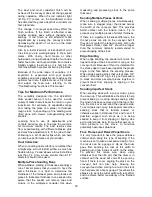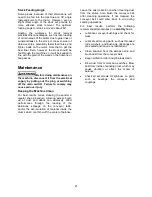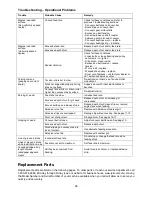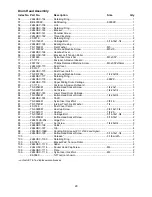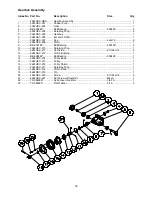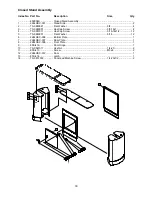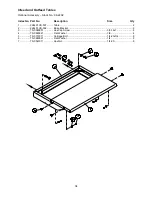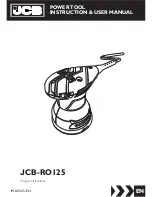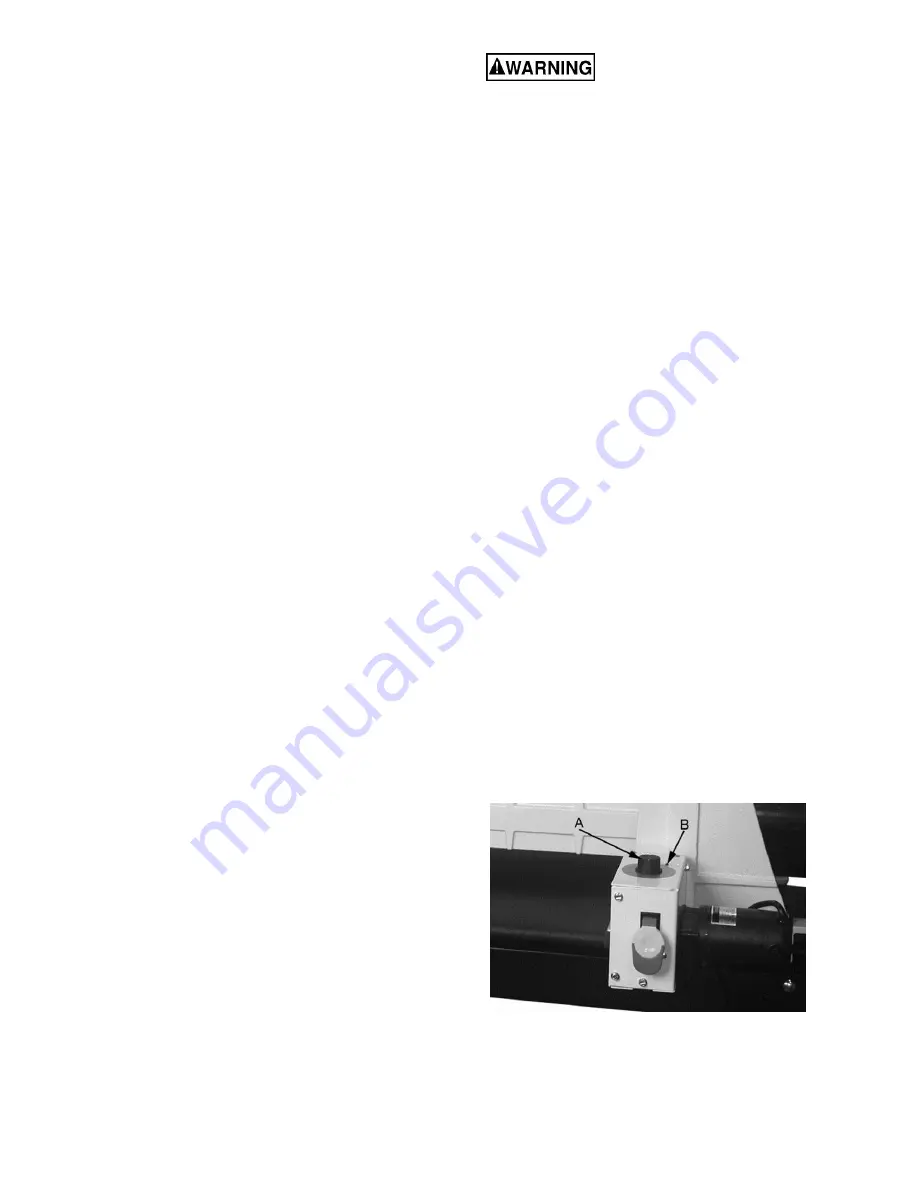
19
Operation
Before using your drum sander, review the
previous pages in this manual on initial set-up
and adjustment. In this section, you will learn
how to operate the machine. Make sure an
abrasive strip is mounted and a proper dust
collection system is connected.
Basic Operating Procedure
1. Set depth of cut.
2. Start dust collection system.
3. Select linear or oscillating sanding mode.
4. Start
drum.
5. Start conveyor and select feed rate. If
oscillator is engaged, set feed rate to
maximum speed.
6. Feed stock through machine.
To feed stock through the sander, rest and hold
the board to be sanded on the conveyor belt,
allowing the conveyor belt to carry the board into
the drum. Once the stock is halfway through,
reposition yourself to the outfeed side of the
machine to receive and control the board as it
exits.
Setting Depth of Cut
Adjusting the drum sander for the proper contact
between the abrasive and the stock determines
the depth of cut. The depth of cut is controlled
by the height adjustment handwheel.
It may take some experimentation to determine
the proper depth of cut, given the variables of
abrasive grit, type of wood, and feed rate. For
best results, use scrap wood to practice sanding
and to develop skill and familiarity with the
machine before doing finish work.
A combination of several variables will
determine the proper depth of cut to use,
including the following:
1. Abrasive type and grit size.
2. Width of the piece being processed.
3. Hardness of the piece.
4. Feed rate of the conveyor belt.
Establishing Proper Drum Height
A good rule of thumb when sanding with grits
finer than 80 is to place the stock to be sanded
under the drum and lower drum until it contacts
the stock. Drum should still rotate by hand.
Without changing drum height,
finish feeding
the stock under the sander.
Start sanding drum and sand the stock at that
same position.
Do not start drum while in
contact with stock!
For sanding with grits coarser than 80, you can
lower the drum slightly.
Always maintain control of stock. Through
practice you will learn the proper depth of cut
considering the variables above.
Selecting SandSmart™ Feed Rates
A faster feed rate allows faster sanding but
fewer revolutions of the drum per inch of
sanding. A slower feed rate provides more
revolutions of the drum per inch of sanding to
allow a greater depth of cut and smooth
sanding.
Note:
If sanding with the oscillator engaged, the
feed rate must be set to maximum speed.
Begin experimenting with the feed rate set at
about 40% to 50% of maximum. The best feed
rate will depend on a number of factors,
including type of stock, grit and depth of cut
used, and whether the stock is fed directly in line
with the conveyor bed or at an angle. If the drum
motor is lugging down, if the conveyor belt is
slipping, or if you observe a ripple effect on the
stock, slow down the feed rate. If the finish is
smooth and the machine is not overworking, you
can experiment using a faster feed rate.
The SandSmart control continuously monitors
the load on the drum motor, and automatically
regulates the speed of the conveyor motor to
maintain the highest feed rate without overload.
If the load on the drum motor increases, the
SandSmart control will decrease the conveyor
feed rate and will stop the conveyor under
extreme conditions. If the load on the drum
decreases, SandSmart will increase the feed
rate but will not increase it faster than the
manual setting on the speed adjustment label.
Figure 27
















